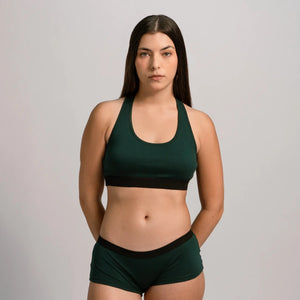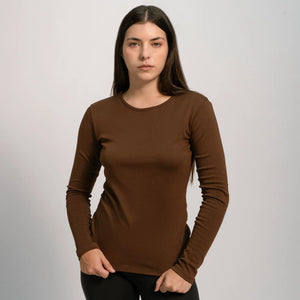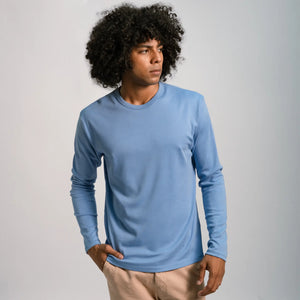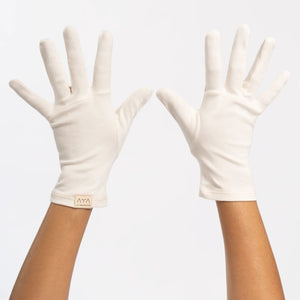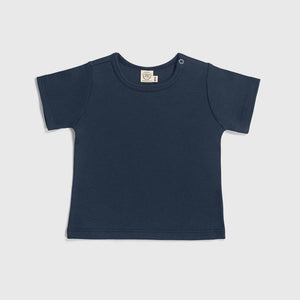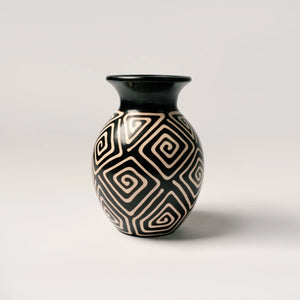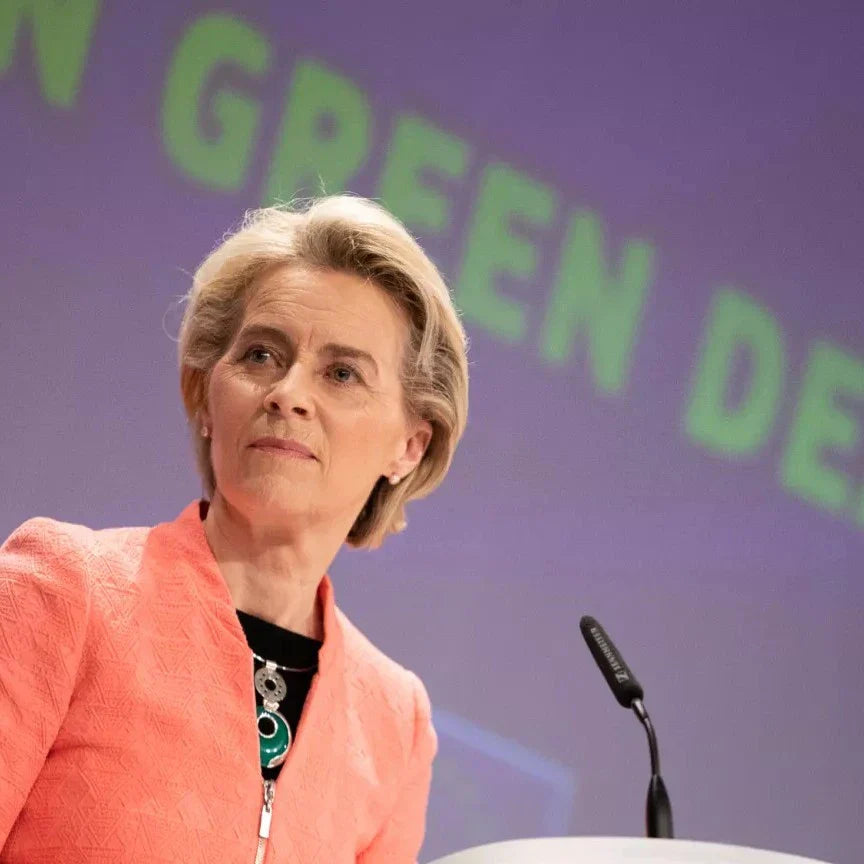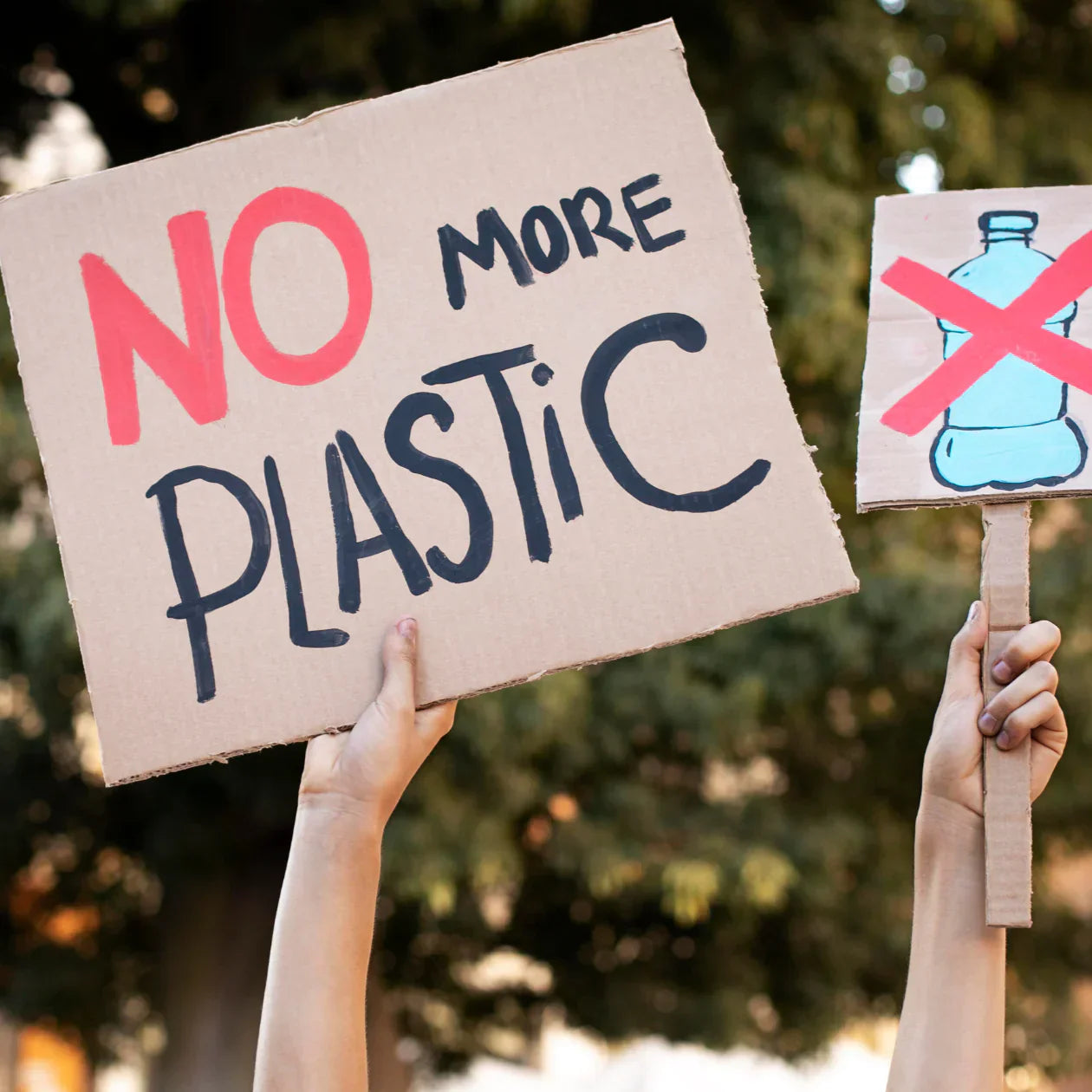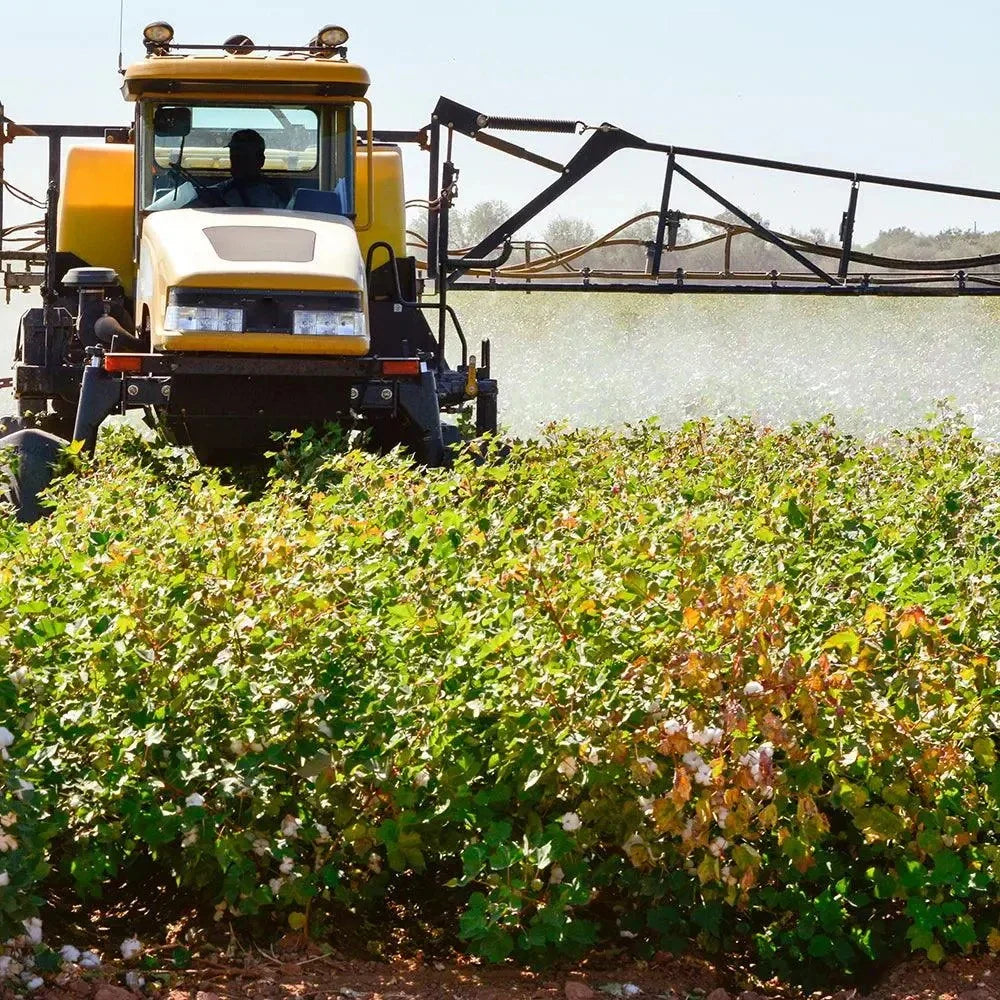Fashion Revolution Day 2025:
Mending Sustainable Fashion & #WhoMadeMyClothes
.
AYA | APRIL 24, 2025
READING TIME: 4 minutes
By Jordy Munarriz & Lesia Tello
AYA | APRIL 24, 2025
READING TIME: 4 minutes
By Jordy Munarriz & Lesia Tello
Fashion Revolution Day—also known as Fashion Revolution Week in its extended form—falls each year on April 24, marking the anniversary of the 2013 Rana Plaza factory collapse in Bangladesh, which claimed more than 1,100 lives and left thousands injured [1,2]. Founded in 2014 by UK designers Carry Somers and Orsola de Castro, the movement challenges brands and consumers to ask “Who made my clothes?” and demands transparency, ethics, and systemic reform across fashion supply chains [2,3].

Evolution into a Global Week of Action
By 2016, Fashion Revolution had expanded to a full week of events—Fashion Revolution Week—with themes such as #LovedClothesLast (promoting garment longevity) and #IMadeYourClothes (giving voice to producers) [4]. In 2025, the week (April 22–27) will unite over 2,000 events in 80 countries under the banner “Think Globally, Act Locally” [4]. Activities range from pop-up exhibitions and panel discussions to repair workshops and mass “Who Made My Clothes?” photo stunts, all designed to hold brands accountable and educate consumers [4].
Milestones: From Teach‑Ins to Environmental LawMilestones and Measurable Impact
- Social Reach: Over 860,000 self-identified “Fashion Revolutionaries” follow the movement online, and during Fashion Revolution Week 2023 it reached 5.8 million on social media and nearly 5 million through press coverage [5].
- Brand Transparency: The 2023 Fashion Transparency Index (which evaluates 250 major brands) found that only 52% now disclose their first-tier suppliers—a meaningful rise from 32% in 2017—yet the industry’s average score remains a meager 26% [6].
- Consumer Shifts: A recent survey revealed that 19% of consumers attempted to buy clothing made responsibly, 14% chose second-hand over new, and just 31% sought durable designs in the past year, compared with 39% who chased sales discounts [7].
How Fashion Revolution Day Transformed Luxury Brands
Fashion Revolution Day’s unrelenting spotlight on supply-chain transparency has forced even the most secretive brands into the open. Parliamentary round-tables in the UK House of Lords and other national assemblies have reframed sustainable fashion as a legislative imperative [8], placing garment workers’ rights and environmental protection squarely on policymakers’ agendas.
Luxury powerhouses such as Gucci and Prada—once notorious for opacity—now rank first and second on The Global Transparency Index, proof that public scrutiny and high visibility can compel real disclosure [9]. Meanwhile, free educational programs and interactive toolkits have proliferated in schools and universities worldwide, nurturing the next generation of conscious consumers.
Extending Garment Lifespan
The tide of transparency is measurable. In 2016, only five brands published full lists of their first-tier manufacturers. By 2023, that number had soared to 118, reflecting a seismic shift in corporate willingness to expose how and where clothes are made [10]. Yet the scale of production continues to balloon: approximately 150 billion new garments were manufactured in 2015, fueling a consumption-and-dump cycle that shows no sign of slowing [11].
Encouragingly, research demonstrates that extending the active life of a single garment by just nine months can shrink its environmental footprint by 20–30%, underscoring how small behavior changes can yield outsized benefits [11].

Garment Lifecycle Assessment.
Payne A. The life-cycle of the fashion garment and the role of Australian mass market designers. Int J Environ Cult Econ Soc Sustain. 2011;7(3):–. doi:10.18848/1832-2077/CGP/v07i03/54938.
Social Media Accountability
Each year, a suite of flagship events around Fashion Revolution Day draws global participation. Mend In Public Day, held on April 26, 2025, saw communities in over 50 countries convene on street corners and in living rooms to stitch up holes—both in clothing and in the industry’s reputation for overproduction [10].
Simultaneously, workshops and exhibitions—from in-person darning circles to live-streamed panel discussions—offer hands-on skill building and hard data on sustainable materials [10]. Downloadable policy toolkits empower citizens to lobby local and national representatives for fairer legislation, while social-media blitzes with hashtags like #WhoMadeMyClothes and #WhoMadeMyFabric sustains online brand accountability long after the day has passed [2,10].
Meet Your Reps for Supply Chain Reform
Looking forward, the movement is pivoting from awareness to action. Advocacy campaigns currently target EU regulatory rollbacks that threaten the livelihoods of millions of garment workers, ensuring that human rights remain non-negotiable [10].
The movement’s ten-point manifesto—covering living wages, biodiversity protection, and waste-management reforms—serves as both a roadmap and rallying cry for activists and executives alike [9]. In 2025, local chapters will intensify community mobilization, urging members to meet their representatives and demand binding commitments on supply-chain decarbonization and circularity [9,10].
Changing Demographics and Preferences
The pandemic also highlighted shifting demographics in the fashion market. Younger consumers, particularly Gen Z and Millennials, became increasingly influential in shaping purchasing trends. Research from the Institute for Sustainable Fashion indicates that younger generations are more likely to support sustainable brands, with 83% of Millennials stating they prefer to buy from companies that share their values [7,8].
Moreover, with the rise of remote work, many consumers reported a preference for comfort over style. A study published in the Journal of Fashion Marketing and Management noted that comfort became the primary driver of clothing purchases for many consumers, with 65% prioritizing comfort in their buying decisions [9]. This trend is likely to persist as remote work becomes a more permanent aspect of many industries.

Changing Demographics and Preferences
The pandemic also highlighted shifting demographics in the fashion market. Younger consumers, particularly Gen Z and Millennials, became increasingly influential in shaping purchasing trends. Research from the Institute for Sustainable Fashion indicates that younger generations are more likely to support sustainable brands, with 83% of Millennials stating they prefer to buy from companies that share their values [7,8].
Moreover, with the rise of remote work, many consumers reported a preference for comfort over style. A study published in the Journal of Fashion Marketing and Management noted that comfort became the primary driver of clothing purchases for many consumers, with 65% prioritizing comfort in their buying decisions [9]. This trend is likely to persist as remote work becomes a more permanent aspect of many industries.

Changing Demographics and Preferences
The pandemic also highlighted shifting demographics in the fashion market. Younger consumers, particularly Gen Z and Millennials, became increasingly influential in shaping purchasing trends. Research from the Institute for Sustainable Fashion indicates that younger generations are more likely to support sustainable brands, with 83% of Millennials stating they prefer to buy from companies that share their values [7,8].
Moreover, with the rise of remote work, many consumers reported a preference for comfort over style. A study published in the Journal of Fashion Marketing and Management noted that comfort became the primary driver of clothing purchases for many consumers, with 65% prioritizing comfort in their buying decisions [9]. This trend is likely to persist as remote work becomes a more permanent aspect of many industries.

Changing Demographics and Preferences
The pandemic also highlighted shifting demographics in the fashion market. Younger consumers, particularly Gen Z and Millennials, became increasingly influential in shaping purchasing trends. Research from the Institute for Sustainable Fashion indicates that younger generations are more likely to support sustainable brands, with 83% of Millennials stating they prefer to buy from companies that share their values [7,8].
Moreover, with the rise of remote work, many consumers reported a preference for comfort over style. A study published in the Journal of Fashion Marketing and Management noted that comfort became the primary driver of clothing purchases for many consumers, with 65% prioritizing comfort in their buying decisions [9]. This trend is likely to persist as remote work becomes a more permanent aspect of many industries.

From Pineapple Fibers to Policy
Corporate pledges born on Fashion Revolution Day have real weight: India’s Project SU.RE, for instance, united 16 brands representing USD 6 billion in annual sales behind targets for water reduction, waste elimination, and social accountability [12].
The global resale market—which many analysts trace to the shift in consumer consciousness around Sustainable Fashion Day—now forecasts USD 900 million in annual turnover by 2035 [13,14], signaling a rapidly growing appetite for second-hand wardrobes. On the policy front, the European Union’s 2022 Textile Strategy enshrined a 65% recycling target for all textile waste by 2030 [15], a direct outcome of relentless advocacy at Sustainable Fashion Day forums across Brussels and Strasbourg [16]. Finally, material innovation has accelerated: alternatives like pineapple, nettle, and banana fibers—first showcased at ethical fashion showcases—have entered commercial pilot programs, trimming reliance on virgin cotton by an estimated 5% in early adopter markets [13].
The Future: From Awareness to Systems Change
Fashion Revolution Day has proven that individual actions and viral hashtags can ignite conversations—but systemic transformation demands binding regulations, enforceable standards—something the EU’s upcoming Corporate Sustainability Reporting Directive aims to enforce—, and consumers who refuse to accept half-measures. As the movement turns its gaze on issues like extended producer responsibility, living wage legislation, and material circularity, April 24 stands as a rallying cry for accountability across every stage of the fashion supply chain.
How long will we applaud empty slogans before we demand the hard work of true transparency?

Fashion Revolution Week Slogan.
Glossarykeywords
Circular Production:
Designing products for reuse/recycling to minimize waste (e.g., textile recycling)
Environmental Footprint:
An environmental footprint is a measurement of how human activities impact the planet. It considers how much natural resources are consumed and how much waste is produced, compared to the Earth's capacity to regenerate.
Fast Fashion:
High-speed, low-cost clothing production contributing to 10% of global carbon emissions and massive waste.
Greenwashing:
A deceptive marketing practice where brands falsely claim to be environmentally friendly while still engaging in harmful practices.
Microplastics:
Tiny plastic particles from synthetic fabrics, accounting for 35% of ocean pollution.
Secondhand Market:
This is a place to buy and sell used items, such as clothing, electronics, and household goods. Secondhand markets include stores, online marketplaces, and flea markets.
Authors & Researchers

Jordy Munarriz
Environmental Engineer with a master's degree in renewable energy and a specialization in sustainability. Researcher and writer, he combines his technical knowledge with his passion for environmental communication, addressing topics of ecological impact and sustainable solutions in the textile industry and beyond.

Lesia Tello
Biologist and researcher specializing in biochemistry, with a master’s degree in education. Passionate about scientific inquiry, she explores the complexities of life and the processes that sustain it. Her work focuses on the intersection of science, education, and communication, making scientific knowledge accessible and impactful.
Authors & Researchers
Authors & Researchers


Jordy Munarriz
Environmental Engineer with a master's degree in renewable energy and a specialization in sustainability. Researcher and writer, he combines his technical knowledge with his passion for environmental communication, addressing topics of ecological impact and sustainable solutions in the textile industry and beyond.
Lesia Tello
Biologist and researcher specializing in biochemistry, with a master’s degree in education. Passionate about scientific inquiry, she explores the complexities of life and the processes that sustain it. Her work focuses on the intersection of science, education, and communication, making scientific knowledge accessible and impactful.
References:
[1] House of Commons Environmental Audit Committee. Evidence on fast fashion and sustainability [Internet]. London: UK Parliament; 2023 [cited 2025 Apr 23]. Available from: https://committees.parliament.uk/writtenevidence/95058/pdf/?utm_source=chatgpt.com
[2] Economist Impact. Beyond the Spotlight: Fashion case study. [Internet]. [cited 2025 Apr 24]. Available from: https://impact.economist.com/projects/beyondthespotlight/fashion-ei-case-study/
[3] Ditty S, Somers S, Seier B, Dewan YK. Why We Still Need a Fashion Revolution. London: Fashion Revolution CIC; 2020. Available from: https://twyg.co.za/wp-content/uploads/2020/05/FR_WhitePaper_2020_Digital_SinglePages.pdf
[4] Halliday S. Fashion Revolution unveils 2025 theme and plans. FashionNetwork.com. 2025 Apr 10. [5] Fashion Revolution. Impact [Internet]. Fashion Revolution; [cited 2025 Apr 24]. Available from: https://www.fashionrevolution.org/impact/
[6] Fashion Revolution. Fashion Transparency Index 2023. London: Fashion Revolution; 2023. Available from: https://www.fashionrevolution.org/fashion-transparency-index-2023/
[7] Fashion Revolution. Consumer Survey Report. [Internet]. London: Fashion Revolution; 2020 [cited 2025 Apr 24]. Available from:
https://www.fashionrevolution.org/resources/consumer-survey/
[8] House of Commons Environmental Audit Committee. Fixing fashion: clothing consumption and sustainability. Sixteenth Report of Session 2017–19. London: House of Commons; 2019 Feb 19. Report No.: HC 1952.
[9] Amed I, Balchandani A, Barrelet D, Berg A, D’Auria G, Rölkens F, Starzynska E. The State of Fashion 2024: Finding pockets of growth as uncertainty reigns. McKinsey & Company; 2023 Nov 29. Available from: https://www.mckinsey.com/industries/retail/our-insights/state-of-fashion-2024
[10] Ruben H. Fashion Revolution calls for local activism to promote change. Fashion Dive. 2025 Apr 22 [cited 2025 Apr 24]
[11] Social Justice Ireland. Fashion Revolution Week 2025. Social Justice Ireland [Internet]. 2025 Apr 21 [cited 2025 Apr 24]; Available from: https://www.socialjustice.ie/article/fashion-revolution-week-2025
[12] United Nations India. Presenting Project SU.RE: Indian apparel industry’s largest commitment to move towards sustainable fashion [Internet]. 2024 Oct 29 [cited 2025 Apr 24]. Available from: https://india.un.org/en/162955-presenting-project-sure-indian-apparel-industry%E2%80%99s-largest-commitment-move-towards
[13] McKinsey & Company. State of Fashion [Internet]. n.d. [cited 2025 Apr 24]. Available from: https://www.mckinsey.com/industries/retail/our-insights/state-of-fashion
[14] FashionUnited. Global sustainable fashion market to hit $33 billion by 2030 [Internet]. 2024 Apr 8 [cited 2025 Apr 24].
[15] European Parliament. Textile Strategy: Towards a Sustainable and Circular Textile Industry [Internet]. 2023 [cited 2025 Apr 24]. Available from: https://www.europarl.europa.eu/doceo/document/A-9-2023-0176_EN.html#_section1
[16] ThinkEast. Sustainable Fashion Dialogue [Internet]. n.d. [cited 2025 Apr 24]. Available from: https://thinkeast.nl/events/event-7
Glossarykeywords
Bamboo:
The term "bamboo fabric" generally refers to a variety of textiles made from the bamboo plant. Most bamboo fabric produced worldwide is bamboo viscose, which is economical to produce, although it has environmental drawbacks and poses occupational hazards.
Cellulose Nanocrystals (CNCs):
They are rod-shaped nanoparticles derived from cellulose. They are biodegradable and renewable materials used in various fields, such as construction, medicine, and crude oil separation.
Circularity in the Textile Value Chain:
It seeks to design durable, recyclable, and long-lasting textiles. The goal is to create a closed-loop system where products are reused and reincorporated into production.
Cotton:
A soft white fibrous substance that surrounds the seeds of a tropical and subtropical plant and is used as textile fiber and thread for sewing.
Fertilizers:
These are nutrient-rich substances used to improve soil characteristics for better crop development. They may contain chemical additives, although there are new developments in the use of organic substances in their production.
Jute:
It is a fiber derived from the jute plant. This plant is composed of long, soft, and lustrous plant fibers that can be spun into thick, strong threads. These fibers are often used to make burlap, a thick, inexpensive material used for bags, sacks, and other industrial purposes. However, jute is a more refined version of burlap, with a softer texture and a more polished appearance.
Hemp:
Industrial hemp is used to make clothing fibers. It is the product of cultivating one of the subspecies of the hemp plant for industrial purposes.
Linen:
It is a plant fiber that comes from the plant of the same name. It is very durable and absorbent, and dries faster than cotton. Thanks to these properties, it is comfortable to wear in warm climates and is valued for making clothing.
Organic Cotton:
It is grown with natural seeds, sustainable irrigation methods, and no pesticides or other harmful chemicals are used in its cultivation. As a result, organic cotton is presented as a healthier alternative for the skin.
Pesticides:
It is a substance used to control, eliminate, repel, or prevent pests. Industry uses chemical pesticides for economic reasons.
Subsidy:
It can be defined as any government assistance or incentive, in cash or kind, towards private sectors - producers or consumers - for which the Government does not receive equivalent compensation in return.
The International Day of Zero Waste:
It is celebrated annually on March 30. The day's goal is to promote sustainable consumption and production and raise awareness about zero-waste initiatives.
UNEP:
The United Nations Environment Programme is responsible for coordinating responses to environmental problems within the United Nations system.
Water-Intensive Practices:
These are activities that consume large amounts of water. These practices can have significant environmental impacts, especially in water-scarce regions.
World Water Day:
It is an international celebration of awareness in the care and preservation of water that has been celebrated annually on March 22 since 1993.
Glossarykeywords
Circular Production:
Designing products for reuse/recycling to minimize waste (e.g., textile recycling)
Environmental Footprint:
An environmental footprint is a measurement of how human activities impact the planet. It considers how much natural resources are consumed and how much waste is produced, compared to the Earth's capacity to regenerate.
Fast Fashion:
High-speed, low-cost clothing production contributing to 10% of global carbon emissions and massive waste.
Greenwashing:
A deceptive marketing practice where brands falsely claim to be environmentally friendly while still engaging in harmful practices.
Secondhand Market:
This is a place to buy and sell used items, such as clothing, electronics, and household goods. Secondhand markets include stores, online marketplaces, and flea markets.
Glossarykeywords
Air Dye:
A waterless dyeing technology that uses air to apply color to textiles, eliminating wastewater and reducing chemical use.
Automation in Textile Production:
The use of AI, robotics, and machine learning to improve efficiency, reduce waste, and lower production costs in the fashion industry.
Carbon Emissions:
Greenhouse gases, particularly carbon dioxide (CO₂), released by industrial processes, transportation, and manufacturing, contributing to climate change.
Circular Economy:
A production and consumption model that minimizes waste and maximizes resource efficiency by designing products for durability, reuse, repair, and recycling.
CO₂ Dyeing (DyeCoo):
A sustainable dyeing technology that uses pressurized carbon dioxide instead of water, significantly reducing water waste and pollution.
Ethical Fashion:
Clothing produced in a way that considers the welfare of workers, animals, and the environment, ensuring fair wages and responsible sourcing.
Fast Fashion:
A mass production model that delivers low-cost, trend-based clothing at high speed, often leading to waste, environmental pollution, and unethical labor practices.
GOTS (Global Organic Textile Standard):
A leading certification for organic textiles that ensures responsible farming practices, sustainable processing, and fair labor conditions.
Greenwashing:
A misleading marketing strategy used by companies to appear more environmentally friendly than they actually are, often exaggerating sustainability claims.
Nanobubble Technology:
A textile treatment method that applies chemicals and dyes using microscopic bubbles, reducing water and chemical usage.
Natural Dyes:
Dyes derived from plants, minerals, or insects that are biodegradable and free from toxic chemicals, unlike synthetic dyes.
Ozone Washing:
A low-impact textile treatment that uses ozone gas instead of chemicals and water to bleach or fade denim, reducing pollution and water consumption.
Proximity Manufacturing:
The practice of producing garments close to consumer markets, reducing transportation-related carbon emissions and promoting local economies.
Recycled Polyester (rPET):
Polyester made from post-consumer plastic waste (e.g., bottles), reducing dependence on virgin petroleum-based fibers.
Slow Fashion:
A movement opposing fast fashion, focusing on sustainable, high-quality, and ethically made clothing that lasts longer.
Sustainable Fashion:
Clothing designed and manufactured with minimal environmental and social impact, using eco-friendly materials and ethical labor practices.
Upcycling:
The creative reuse of materials or textiles to create new products of equal or higher value, reducing waste without breaking down fibers.
Wastewater Recycling:
The treatment and reuse of water in textile production, minimizing freshwater consumption and reducing pollution.
Zero-Waste Design:
A fashion design approach that maximizes fabric efficiency, ensuring that no textile scraps go to waste during the cutting and sewing process.
References:
[1] House of Commons Environmental Audit Committee. Evidence on fast fashion and sustainability [Internet]. London: UK Parliament; 2023 [cited 2025 Apr 23]. Available from: https://committees.parliament.uk/writtenevidence/95058/pdf/?utm_source=chatgpt.com
[2] Economist Impact. Beyond the Spotlight: Fashion case study. [Internet]. [cited 2025 Apr 24]. Available from: https://impact.economist.com/projects/beyondthespotlight/fashion-ei-case-study/
[3] Ditty S, Somers S, Seier B, Dewan YK. Why We Still Need a Fashion Revolution. London: Fashion Revolution CIC; 2020. Available from: https://twyg.co.za/wp-content/uploads/2020/05/FR_WhitePaper_2020_Digital_SinglePages.pdf
[4] Halliday S. Fashion Revolution unveils 2025 theme and plans. FashionNetwork.com. 2025 Apr 10. [5] Fashion Revolution. Impact [Internet]. Fashion Revolution; [cited 2025 Apr 24]. Available from: https://www.fashionrevolution.org/impact/
[6] Fashion Revolution. Fashion Transparency Index 2023. London: Fashion Revolution; 2023. Available from: https://www.fashionrevolution.org/fashion-transparency-index-2023/
[7] Fashion Revolution. Consumer Survey Report. [Internet]. London: Fashion Revolution; 2020 [cited 2025 Apr 24]. Available from:
https://www.fashionrevolution.org/resources/consumer-survey/
[8] House of Commons Environmental Audit Committee. Fixing fashion: clothing consumption and sustainability. Sixteenth Report of Session 2017–19. London: House of Commons; 2019 Feb 19. Report No.: HC 1952.
[9] Amed I, Balchandani A, Barrelet D, Berg A, D’Auria G, Rölkens F, Starzynska E. The State of Fashion 2024: Finding pockets of growth as uncertainty reigns. McKinsey & Company; 2023 Nov 29. Available from: https://www.mckinsey.com/industries/retail/our-insights/state-of-fashion-2024
[10] Ruben H. Fashion Revolution calls for local activism to promote change. Fashion Dive. 2025 Apr 22 [cited 2025 Apr 24]
[11] Social Justice Ireland. Fashion Revolution Week 2025. Social Justice Ireland [Internet]. 2025 Apr 21 [cited 2025 Apr 24]; Available from: https://www.socialjustice.ie/article/fashion-revolution-week-2025
[12] United Nations India. Presenting Project SU.RE: Indian apparel industry’s largest commitment to move towards sustainable fashion [Internet]. 2024 Oct 29 [cited 2025 Apr 24]. Available from: https://india.un.org/en/162955-presenting-project-sure-indian-apparel-industry%E2%80%99s-largest-commitment-move-towards
[13] McKinsey & Company. State of Fashion [Internet]. n.d. [cited 2025 Apr 24]. Available from: https://www.mckinsey.com/industries/retail/our-insights/state-of-fashion
[14] FashionUnited. Global sustainable fashion market to hit $33 billion by 2030 [Internet]. 2024 Apr 8 [cited 2025 Apr 24].
[15] European Parliament. Textile Strategy: Towards a Sustainable and Circular Textile Industry [Internet]. 2023 [cited 2025 Apr 24]. Available from: https://www.europarl.europa.eu/doceo/document/A-9-2023-0176_EN.html#_section1
[16] ThinkEast. Sustainable Fashion Dialogue [Internet]. n.d. [cited 2025 Apr 24]. Available from: https://thinkeast.nl/events/event-7
You don't have to put all the weight on your shoulders. Every action counts. At AYA, we fight microplastic pollution by making a 100% plastic-free catalog.
Visit Our Shop →You May Also Like to Read...
EU Green Claims Reversal: What This Means for Greenwashing
The EU's Green Claims Directive is gone. Understand the real impact of greenwashing on your choices and learn how to identify brands that are truly transparent.
France's new law
France has taken a bold step against ultra-fast fashion, targeting brands like Shein with new environmental laws. Discover what this means for sustainability and the future of clothing.
Plastic-Free July: Say No to Single-Use Plastic and Synthetic Clothing
Discover the hidden microplastic footprint of synthetic clothing and fast fashion. Explore the benefits of organic cotton for a truly sustainable wardrobe.
Organic Cotton vs. Conventional Cotton: Environmental, Health & Social Impact
Discover how organic cotton drastically reduces water use, pesticide exposure and environmental harm, while producing longer-lasting, toxin-free garments.

